What is a busbar, where and how are they used, types of busbars
In GOST 28668.1-91 (IEC 439-2-87) it is written that the busbar is a complete device that has passed type tests, in the form of a system of conductors placed inside a panel, pipe or other similar shell, which consists of distributed busbars, which in turn rely on insulating material.
The busbar can consist of the following parts:
-
sections with places to connect branch devices, or without them;
-
phase transposition sections, flexible, compensating, transition or connecting sections;
-
direct branching of devices.
Obviously, the very term «bus» does not give us an idea about the cross-section, the geometric shape or the dimensions of the conductor itself.
In other words, a busbar is a system of solid copper or aluminum busbars enclosed in a protective metal sheath; an insulated busbar system designed for the transmission and distribution of electrical energy. A typical busbar is designed for voltages up to 1000 V and is supplied as complete sections.
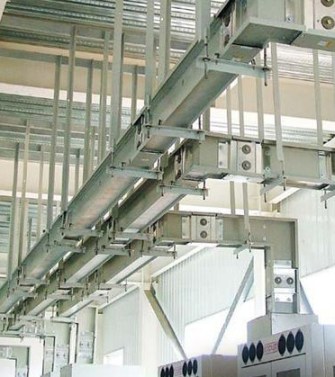
The bus as a structure can be easily modified to optimally power the users. If it is necessary to change the configuration, disassembly is always permissible.
The busbar can, for example, be routed from one room to another. For example, in large commercial areas, for the purpose of lighting or zoning of premises, modular bus channels are used, on which the floodlights are placed.
You can always find bus channels in the form of one or several lines in shopping centers, where they are usually installed in various forms. The process of installing the busbar is quite simple, it does not require long work and large physical costs. Thus, busbars are an excellent alternative to cable.
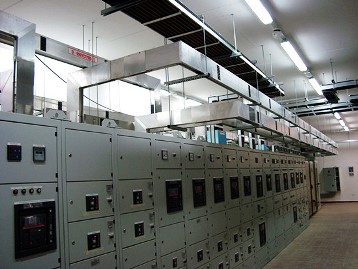
Structurally, busbars can be open, protected or closed. Open busbars applicable to backbone networks in locations with a normal, non-aggressive external environment.
Open bus ducts include open tap trolleys and bus ducts. They are made in the form of aluminum busbars placed on insulators attached to columns or trusses. At the same time, the norms for the minimum distance to the equipment and pipelines, as well as the norms for the minimum heights, must be observed. In places where there is a possibility of accidental contact with the busbars, the open busbars are covered with protective metal boxes or nets.
Closed and protected busbars - the main type of networks traditionally used for the distribution of electricity in many shops. The busbars of the protected busbars are covered with a perforated box or mesh to prevent accidental touching of the busbars and objects accidentally getting on them. In closed busses, the busses are completely enclosed by a tight box.
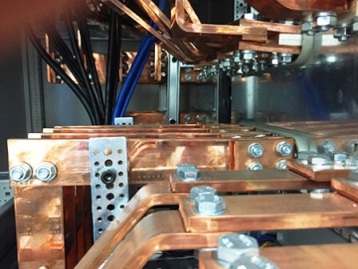
The minimum installation height of protected busbars is not less than 2.5 m from the floor surface, and closed busbars can be installed without special height measures. This simplifies the installation of electrical networks in workshops, since bus channels can simply be laid along the line of machines, even at a height of up to 1 m from the floor. This minimizes the length of branch connections to the machine from the busbar.
Buses are of the following types:
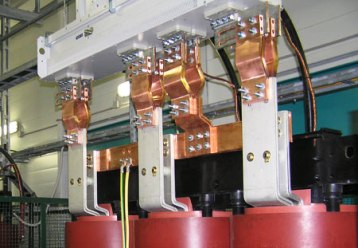
Busbars - intended for installation in industrial premises. The rack busbar is laid directly from the substation.
In the production workshops of enterprises where metal-cutting machines and other electrical mechanisms are located throughout the area in the form of rows or regularly move in connection with changes in the technologies of the production process, distribution and trunk closed bus channels are used directly as a distribution network and power main lines.
Trunk bus channels withstand significant currents, they are designed for currents from 1600 to 4000 A and for a large number of connecting branches for connecting users (6 m for 2 places).
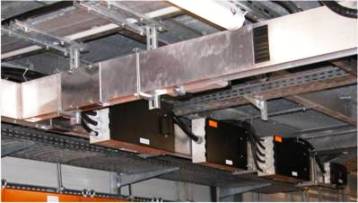
Distribution busbars — intended for the distribution of electricity from the main line to several consumers.
Distribution busbars are designed for currents up to 630 A and for an even greater number of user connection points (from 3 to 6) per 3-meter section.
In the shops of various enterprises, closed distribution bus channels are used quite widely.They are supplied in the form of a set of sections, each 3 m long, equipped with connecting elements for serial connection of sections, junction boxes and entry boxes for connecting busbars to the mains.
For more information on these types of tires see here: Main and distribution busbars
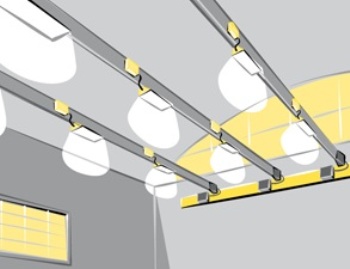
Track lighting - used to form lighting lines using low power floodlights.
Lighting pipelines designed for a current of 25 A, type SHOS - four-core, with insulated round conductors with a cross section of 6 mm2. The length of each section of the SCO busbar is 3 m.
The section is equipped with six single-phase plug connections (phase-neutral) every 50 cm. The busbar set also includes 10 A current plugs, as well as straight, angled, flexible and inlet sections. With the help of this set of elements, a complete tire is assembled for even the most difficult routes.
Adjacent sections are connected to an additional one using two screws. The lamps are then hung to the rail on a hook clamp and connected to one of the plug connectors. The distance between the attachment points does not exceed 2 m. If the lighting fixtures are not mounted on bus channel boxes, the step can be even more — up to 3 m.
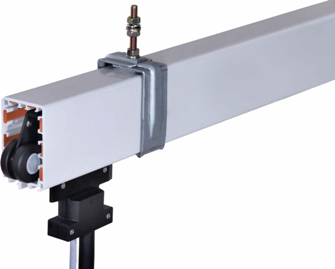
Trolleybuses — used to power monorails, lifting cranes, ropeways and other mobile electrical systems.
The bus provides a number of advantages:
-
Busbars are more aesthetically pleasing than cables.
-
The installation process takes less time than installing a cable.
-
Industrial busbars with a rectangular cross-section have a lower resistance, which reduces active losses and limits reactive energy, that is, helps to save.
-
The tires are environmentally friendly.
-
The design features of the aluminum housing allow for quick heat dissipation.
-
Busbars have a degree of protection not less than IP55.
-
Busbars have a wide service life of 25 to 30 years and require no maintenance.
-
The shielding property of the housing minimizes the level of electromagnetic radiation.
-
By painting the rail in any suitable color, you can fit it into the interior of a shop, office and other objects for which aesthetics are important.
